
Creating a Wonderland in an Eichler Home
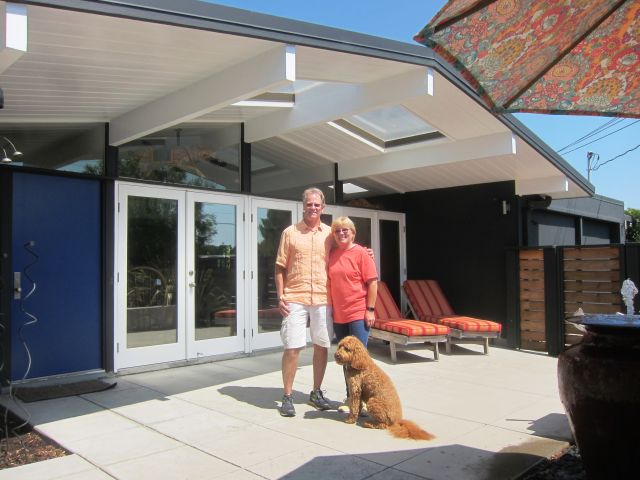 |
|
|
Fences that protect the front yards of Eichler homes can have a stern, foreboding look – but not when they are adorned with a maniacally grinning Cheshire Cat or the Mad Hatter offering you tea.
The longtime owners of a home in Joe Eichler’s San Mateo Highlands tract have turned their home into a true wonderland, both inside and out. School children have admired the exterior display, and passersby have taken photos.
To owners Nancy and Steve Woods, though, their home is less a tourist attraction than “a very comfortable place to be,” Nancy says.
Besides the Alice in Wonderland-themed artwork, which is crafted from found objects by the Sebastopol folk artist, Patrick Amiot, the home is filled with amazing carousel creatures from the 19th and early 20th centuries, a candy vending machine from the 1940s or ‘50s, collectable clocks from France (some old enough to have chimed in the ears of Louis XVI), and many works of art by Nancy herself.
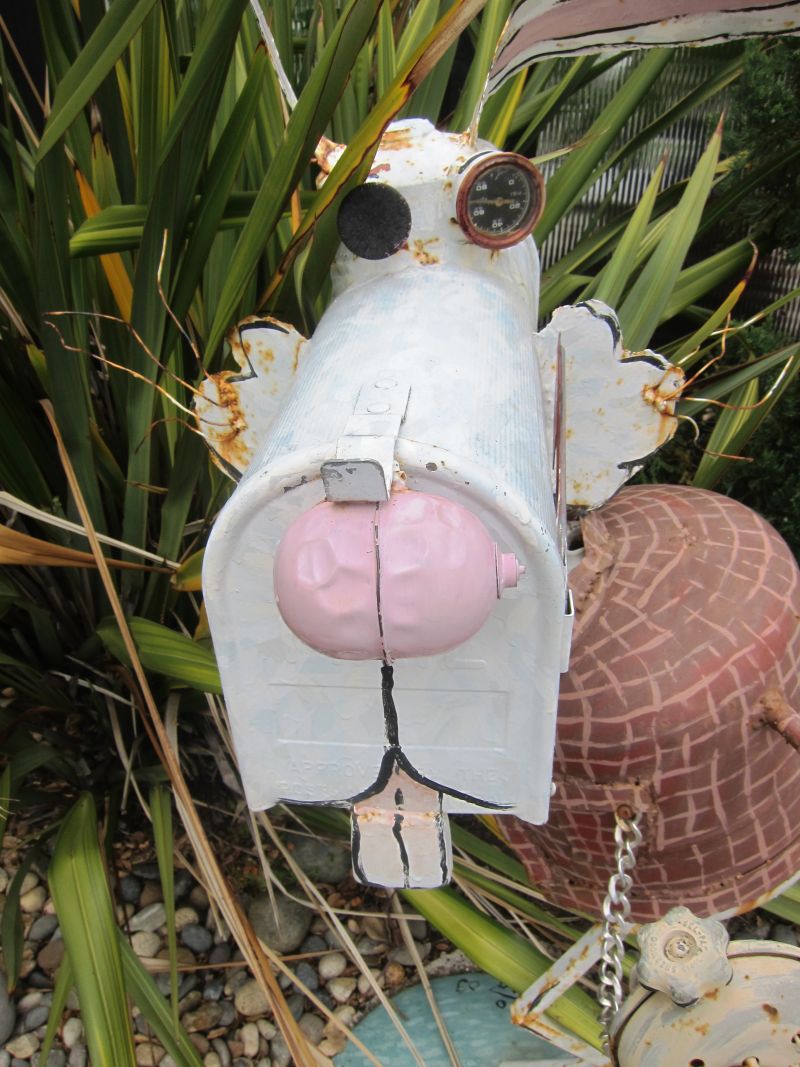 |
|
|
Among her items recently on display was an early 20th century gold-footed rocker painted, by Nancy herself, with an image of the Mad Hatter in the style of Lewis Carroll’s original illustrator, John Tenniel.
“You want to get back in touch with that child within yourself,” Nancy says, referring to her home’s décor and to her and Steve’s general approach to life.
How they turned their house into the art object that it has become says something about the home itself. Eichlers, open and inviting, can accommodate a wide variety of art and design objects – not just Eames chairs.
And the homes can do so without losing their modern lines. Nancy and Steve recall that, when they moved into their home in 1978, attracted by its openness and light but not by its modern style, and by the large yard that had room for their two Saint Bernards, they considered altering the architecture – but were dissuaded.
“We were going to renovate and do something different, but we had an architect who had studied under Frank Lloyd Wright,” Nancy says.
“He said we should think very hard about changing the style, because even in 1978, he said there are people who buy these houses because they are Eichlers. “
“Really??!!”
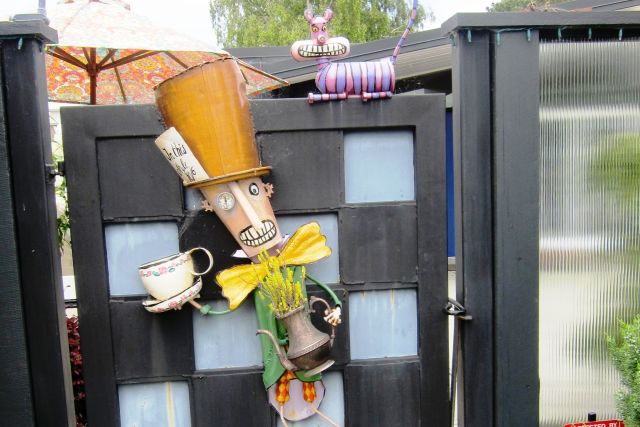 |
|
|
Steve adds, “He actually got us to appreciate the openness. And like in Paris – it’s the light!” The home was their “starter home,” they joke, the only home they have owned.
While much of their furniture is traditional – if hand-painted furniture from the early 20th century can be called traditional – it works well in the house because of the spirit of whimsy – and because they don’t overdo it.
“With a house like this, you can make it look like a trash heap really quick by mixing stuff up too much,” Steve suggests. His wife adds, “Because I’m an artist, I can get away with some things that other people don’t get away with.”
Nancy, who had a degree in graphic design from the California College of Arts and Crafts in Oakland, began operating her own business the year they bought the house.
“I’m a sign maker by trade,” she says. Steve has worked in the field of elevators, installation and repair.
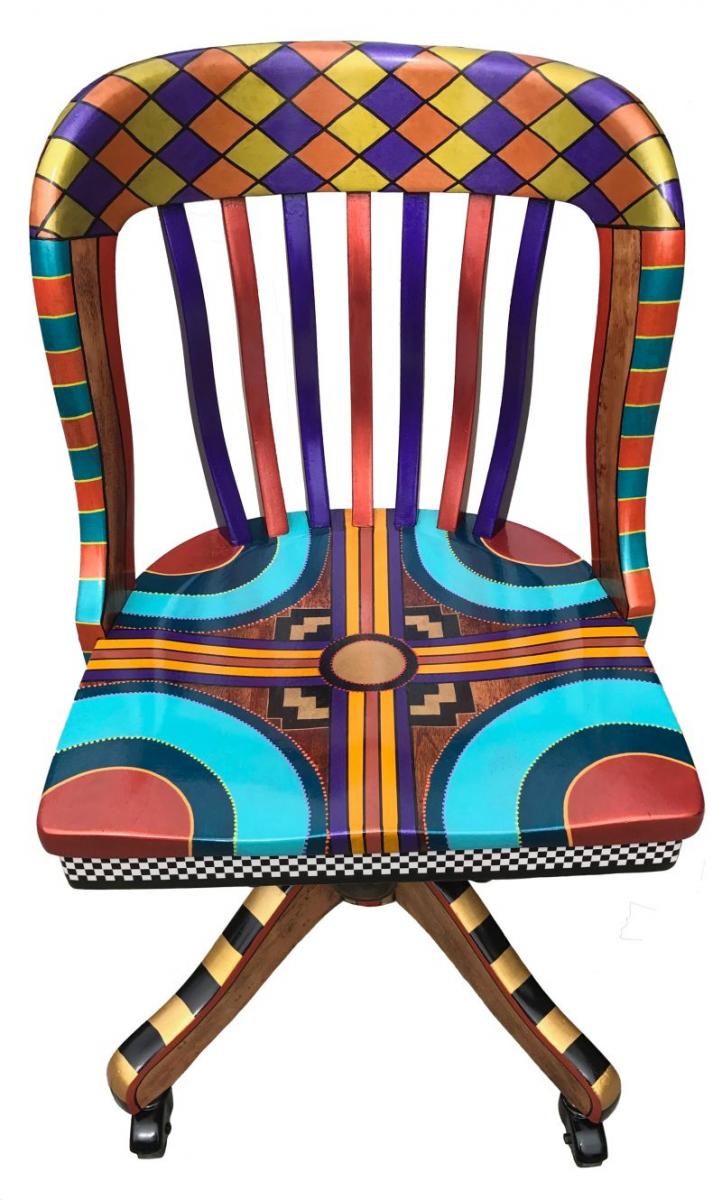 |
|
|
Over the years, Nancy has created painted signs, and had a big business designing and making sandblasted signs. Clients included the parks and recreation departments of Belmont and Foster City, not to mention the esteemed Nick’s Rockaway Restaurant in Pacifica.
For a time, working with a partner who was an expert seamstress, Nancy also produced “art to wear.”
Today, while Nancy still does signs, painted furniture has become her major endeavor. She buys old furniture – it's better made than new, she says – and has a particular fondness for retired courtroom chairs, “the kind you see on Perry Mason.”
“They are sturdy, stout, and oak or walnut,” Steve explains. The ones the lawyers used have wheels, the ones for jurors do not.
She often has to deconstruct the chairs, rebuild and re-glue them. And stripping off old finishes is tedious and can take days. “Stripping. It’s horrible!,” she says. “You really have to want to do this.”
For all that, her prices are low, $550 for some court room chairs, $1,200 for the Mad Hatter.
She sells from her studio, at the Peninsula Museum of Art, which is often open Wednesdays-Thursdays. She sells during Silicon Valley Open Studios in May, and is happy to accept email inquiries: [email protected].
“During open studios, many come into my space and just sit and talk,” she says. “Some come in with ideas of what they want to see in their home. And I work with them to find the piece, if they don't have it already, and paint it with colors for their home.”
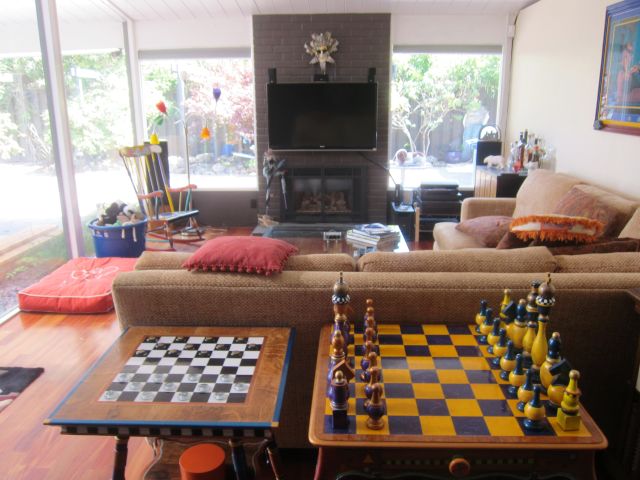 |
|
|
She doesn’t have gallery representation. “It’s really difficult to place my furniture,” Nancy says. “It doesn’t work for furniture stores, and it’s not junk. It has to be in a higher class gallery where people can appreciate it as a work of art. And number two, it’s usable.”
She is happy to do commissions – usually. She tells of one client who insisted that Nancy paint the entirety of one chair – though Nancy hoped to preserve some of the original wood.
“As I painted it out, I apologized to the chair profusely,” Nancy says.
The chair may have grumbled. But the client?
“She loved it!” Nancy says. “She sent me a letter. She wanted to take me to have a foot massage somewhere.”
Much of Nancy’s painted furniture, though, comes from personal inspiration. “A lot of the time I paint what I want to paint, and then if people like it…,” she lets the thought drift off.
- ‹ previous
- 136 of 677
- next ›



